The DT Swiss ARC 1100 Dicut are the flagship wheelset for the Biel-based specialists, the zenith of design right now for this Swiss brand. But how much technology is stacked inside its cryptic name? What on Earth is the Road Revolution 18, and how many watts is your beard worth? No more questions, here are the answers.
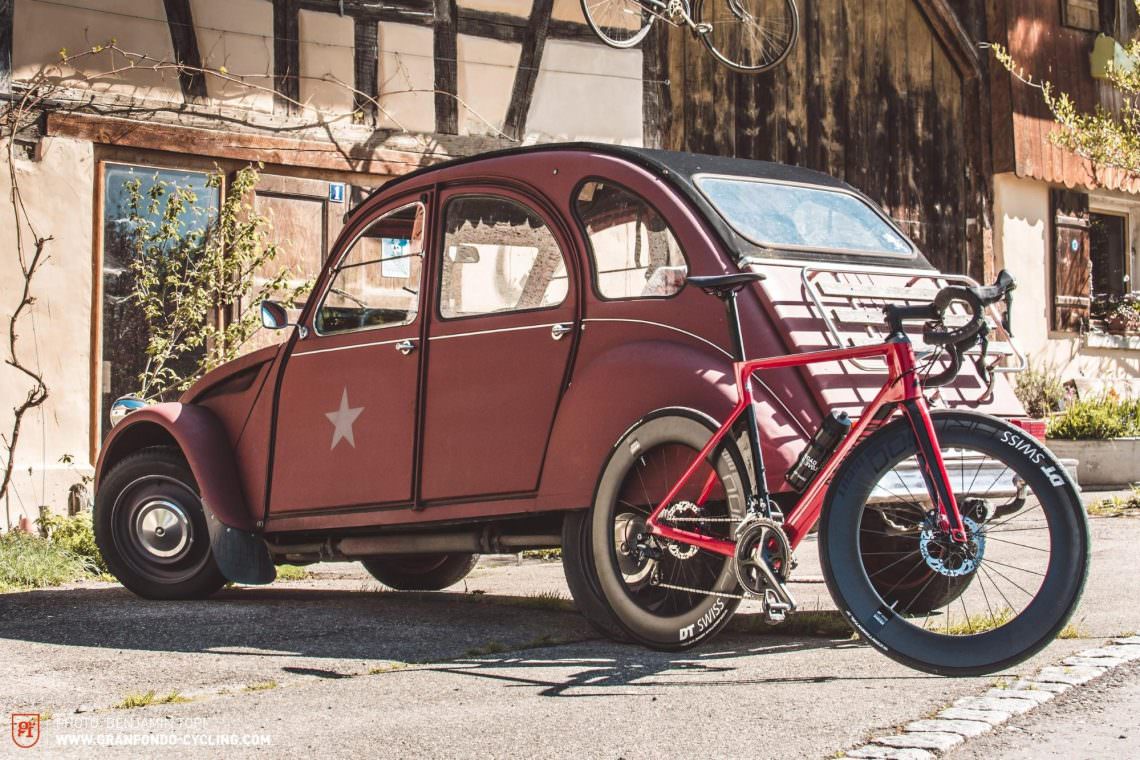
Road Revolution 2018
For DT Swiss, the principle behind their Road Revolution 18 sees once again targeting the apex of the wheel market. Throughout the year there’s a whole series of products being launched, hence the Revolution. We’ve already outlined the details of the endurance-focused ERC 1100 Dicut, and these stand alongside the aero-optimised ARC 1100 Dicut as well as the all-round performance specialists PRC 1400 Dicut. Naturally there are variations in certain parts, such as the ratchet freehub and hub housing, but the key differences are in the spokes – depending on the specific use, DT Swiss have meticulously calculated the form and dimensions here.
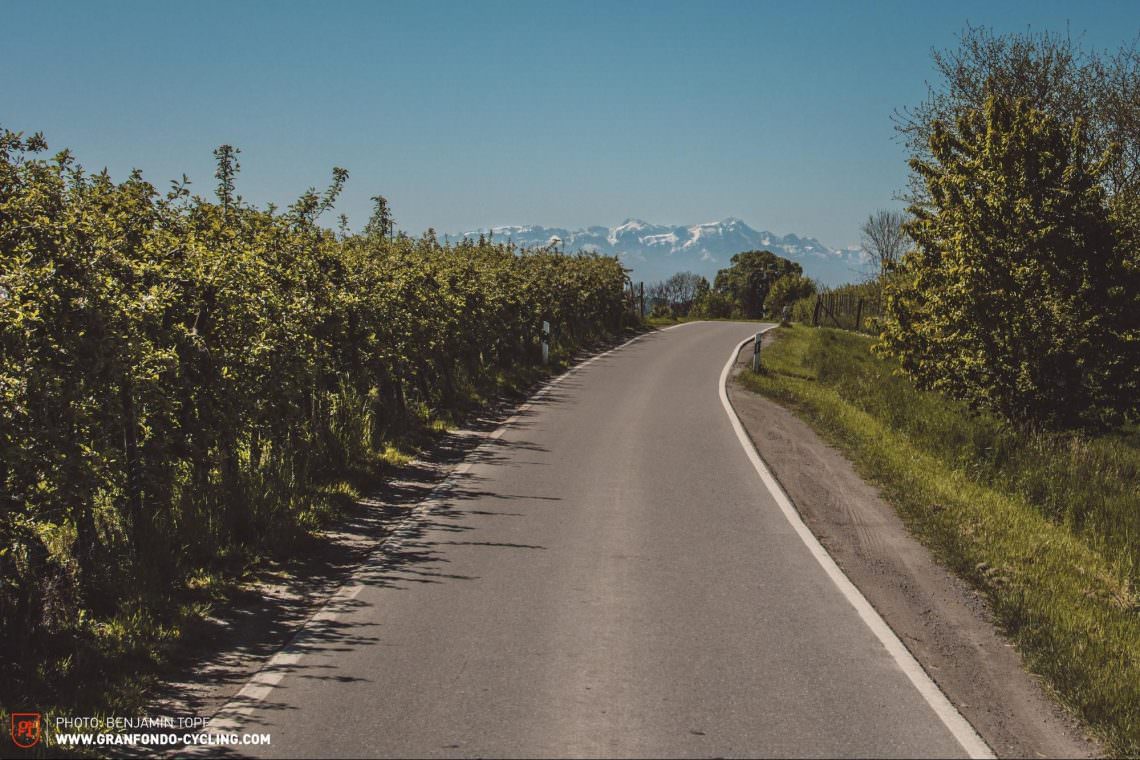

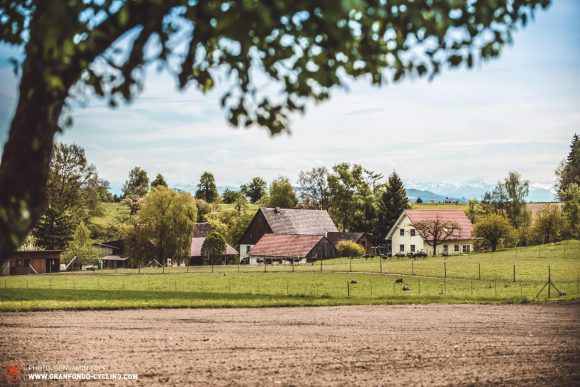
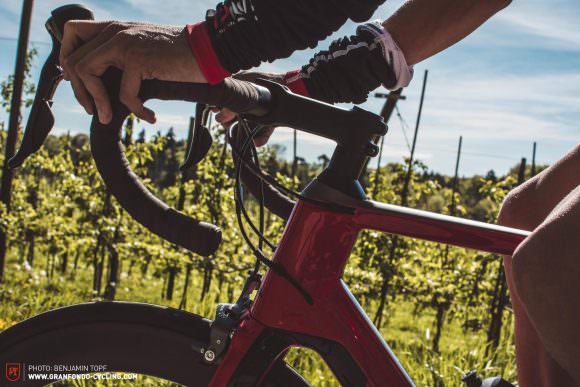
The Concept
When we’re talking about aerodynamics, it’s all about how something behaves in its direct environment, namely the air around it. When designing the DT Swiss ARC 1100 Dicut, the Swiss team of engineers focused on minimising air resistance. Not a new topic by any means, but the in-house development team joined forces with aerodynamic specialists Swiss Side to really exhaust hitherto unexplored avenues, which led them to the concept of rotational drag (basically this is the air resistance that affects the spokes and nipples while the wheel turns). More conventionally people tend to exclusively focus on translational drag, which refers exclusively to the air resistance that hits the rider and bike head-on. However, this is where DT Swiss went further.
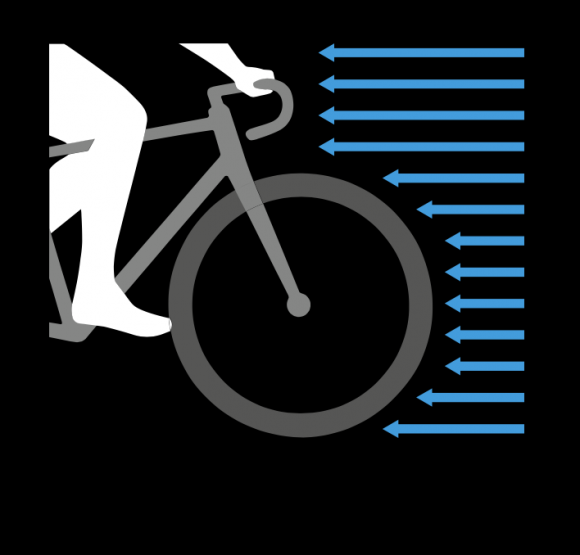
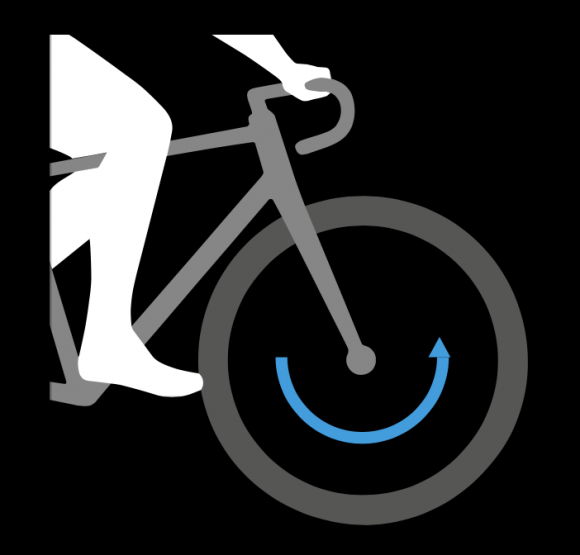
Up until now, wheels have been turned by a roller in conventional wind tunnel testing – as such, there was no real data available for the engineers of the ARC 1100 Dicut that would reveal just how much force is needed to keep the wheel upright. In a bold move, they decided to first spin the wheel and then allow it to continue spinning without any external acceleration. This approach delivered masses of data that allowed the team to work out the effects of the rotational drag.

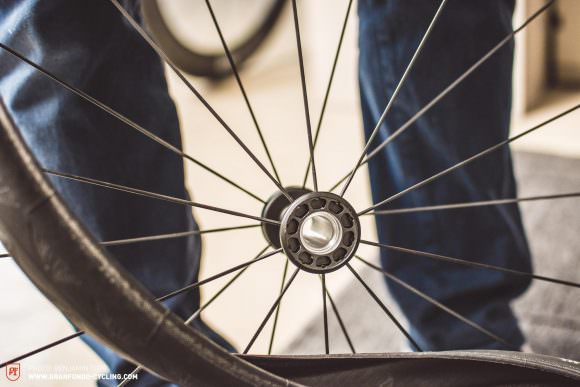
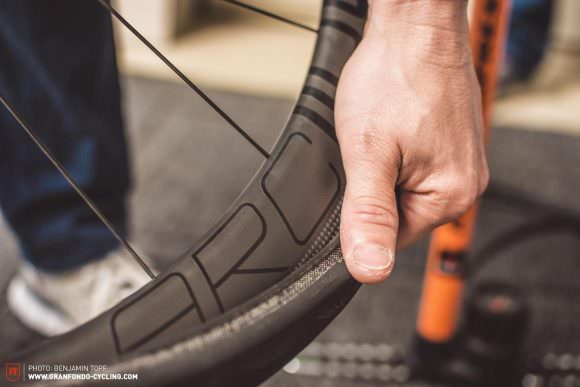
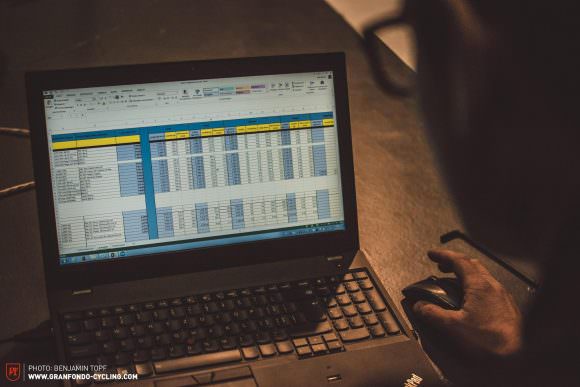
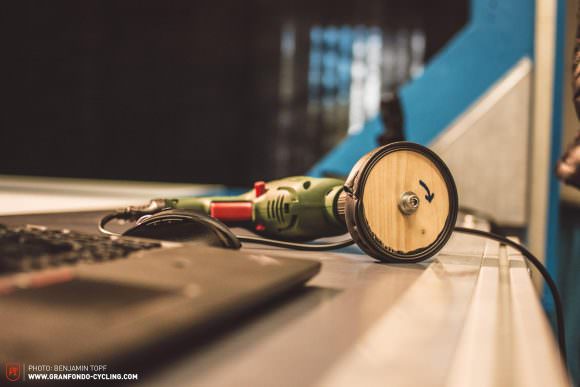

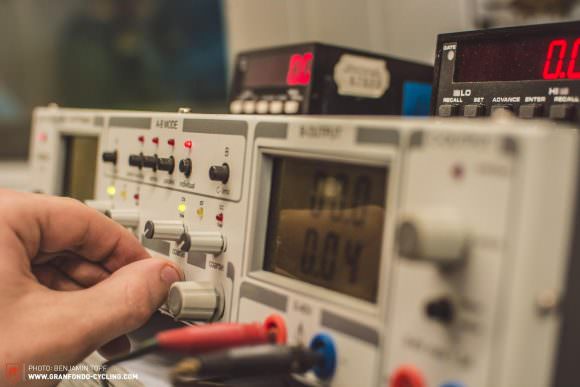
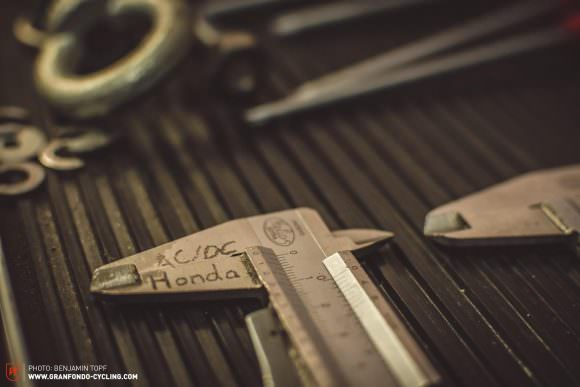
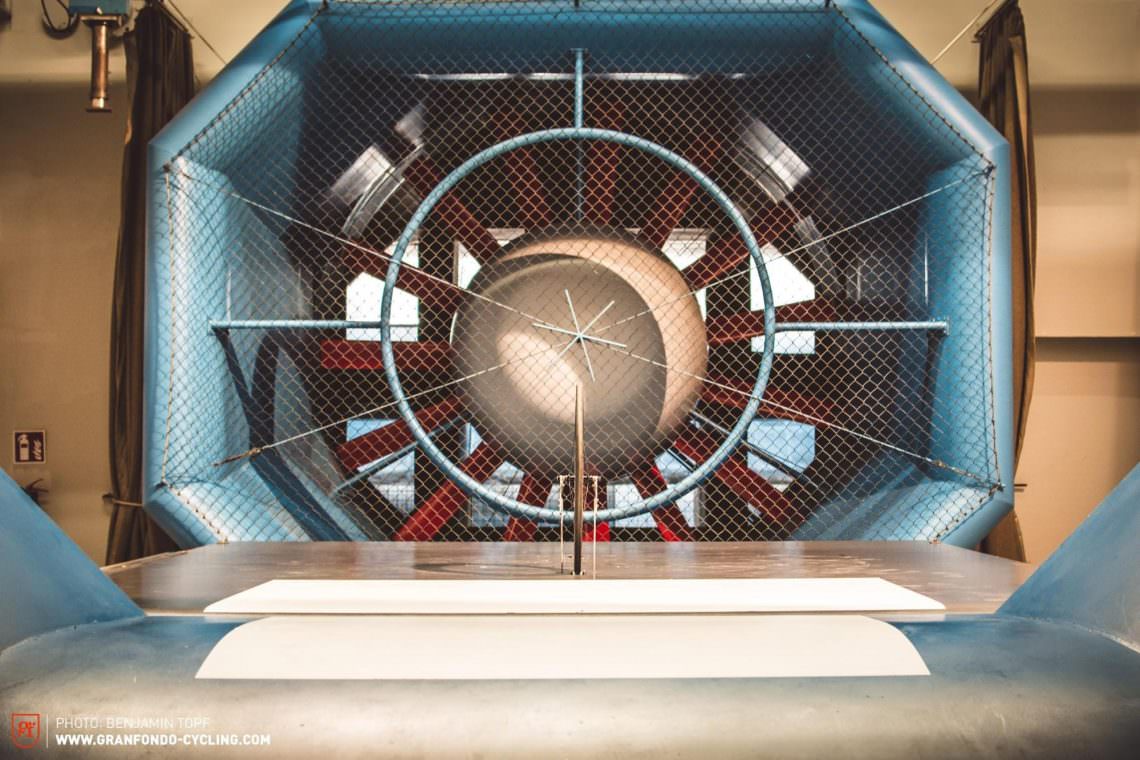
The wind tunnel testing led the team to a number of conclusions that contributed to shaping the final design. According to DT Swiss, up to 25% of the wheel drag comes as a result of the rotational drag. Their finding: the deeper the rims, the less rotational drag: 80 mm rims – 4.13 W / 62 mm deep rims– 4.27 W / and 48 mm deep rims – 4.4 W. External nipples cause 4% more rotational drag than internal ones. The same applies to the spokes too: DT Swiss Aerolite bladed spokes cause 12% less rotational drag than the standard round DT Swiss Champion models.

On the roads
With an interior rim width of 17 mm, the ARC 1100 Dicut are best suited to 23 mm to 25 mm tires. Our test bike worked as a testbed for both sizes, with the wider tire mounted at the rear. On the first rollout we’ve selected the deeper ARC 100 Dicut with 80 mm rims, which had great acoustics as soon as they start rolling. Coming in at 1,708 g, you can’t really shout about their lightweight credentials but once you get up to speed they prove unstoppable. On the smugly empty roads the wheels feel rapid, able to hold momentum over the ups and downs in the road and they also hold their line sublimely. The front wheel felt pretty responsive on descents, but their higher rolling mass required fairly firm steering.
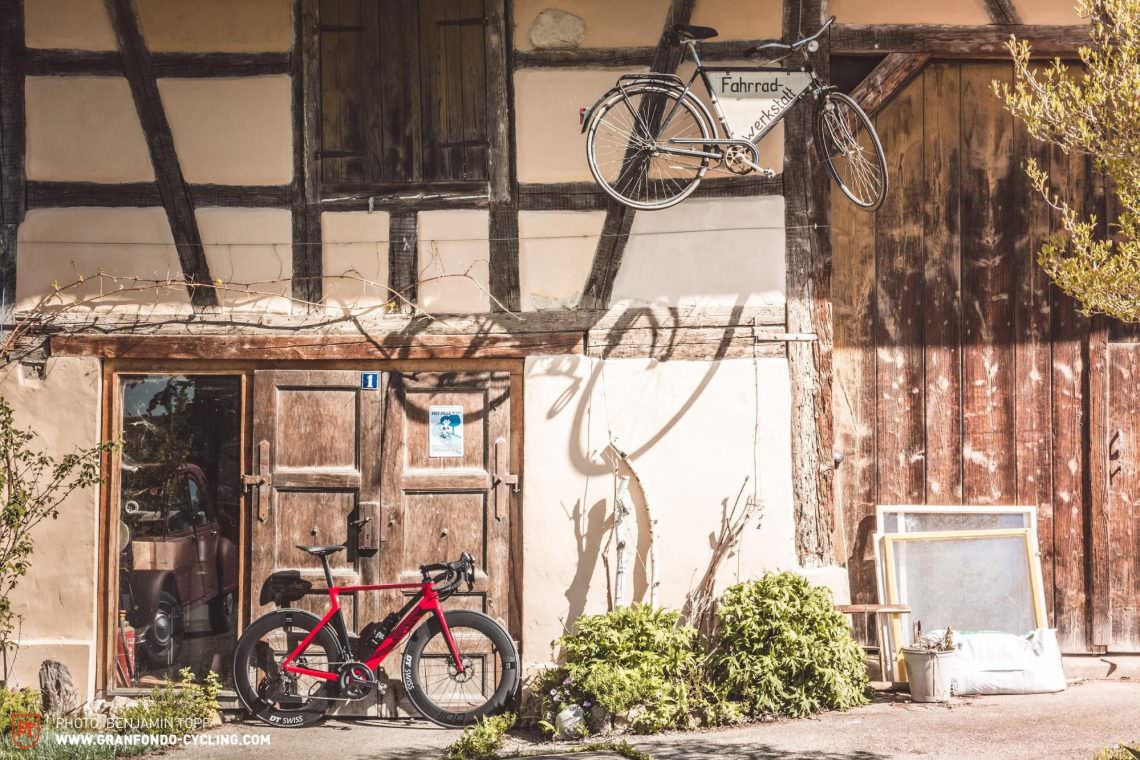
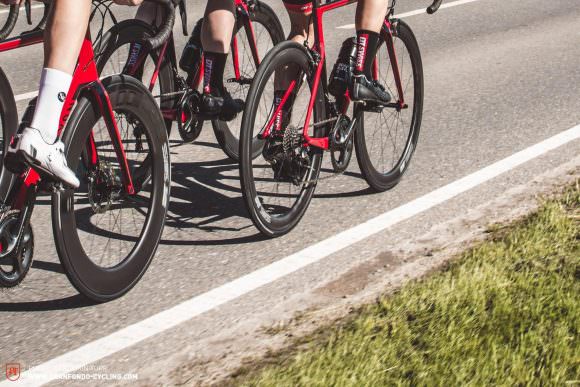
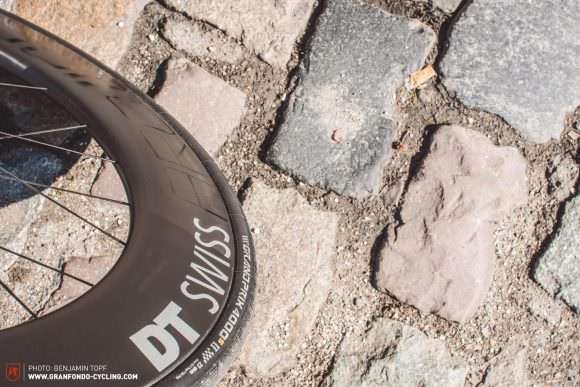
Curious about why the 48 mm rim version are the firm favourite amongst the DT Swiss inner circle, these made total sense for our next test ride. We weren’t disappointed; ultra responsive and with a real kick for speed, these were markedly different to ride than the 80 mm-deep rims that had really seemed like they were on rails while going in a straight line. With less susceptibility to crosswinds, the 48 mm version were a real demonstration of the versatility of this aero wheelset. Again, these won’t break any weight records but 1,490 g is still decent for an aero set. For a direct comparison: the 454 NSW wheelset from DT Swiss’ main competitor Zipp weigh in at 1,525 g.
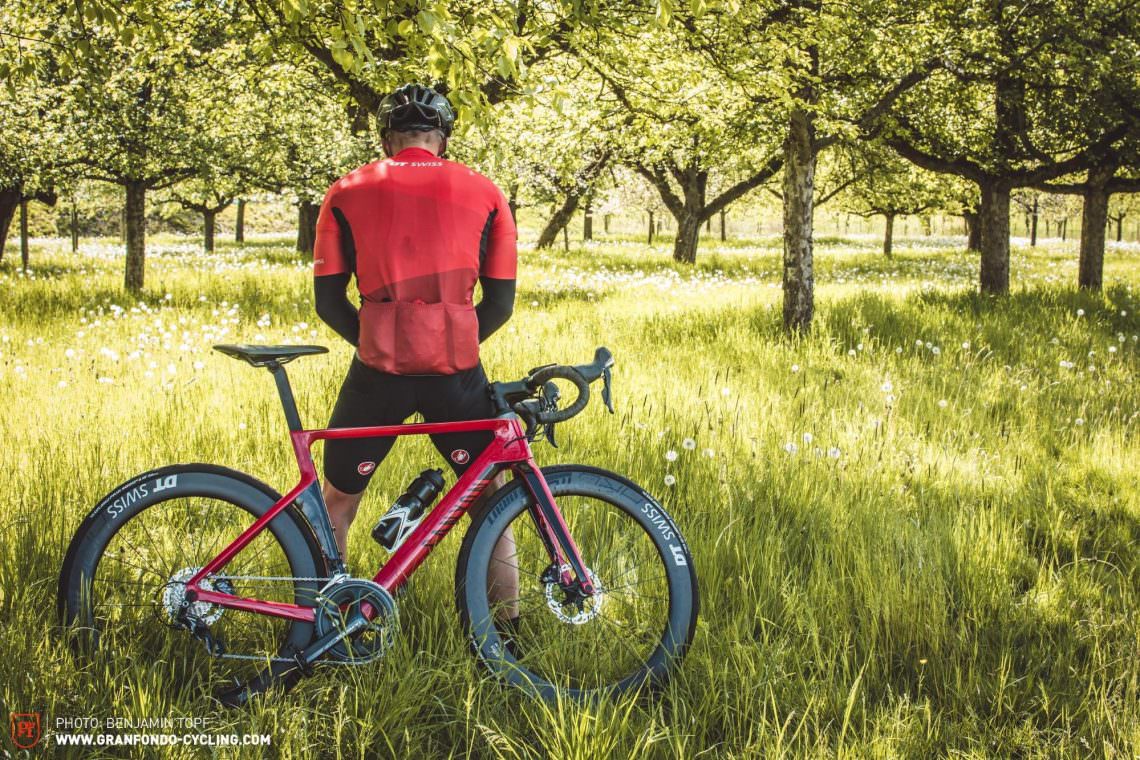
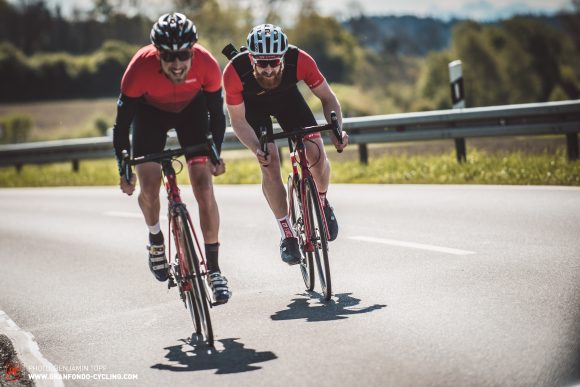
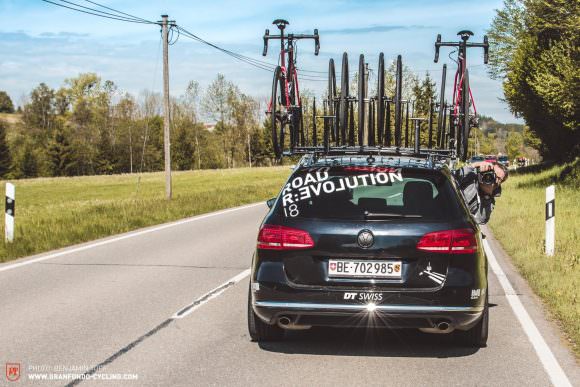
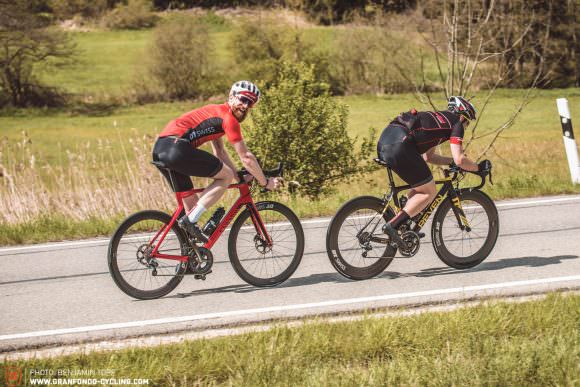



For more information head to DT Swiss.
Did you enjoy this article? If so, we would be stoked if you decide to support us with a monthly contribution. By becoming a supporter of GRAN FONDO, you will help secure a sustainable future for high-quality cycling journalism. Click here to learn more.
Words: Photos: Benjamin Topf / Michael Riehle Translation: Emmie Collinge







